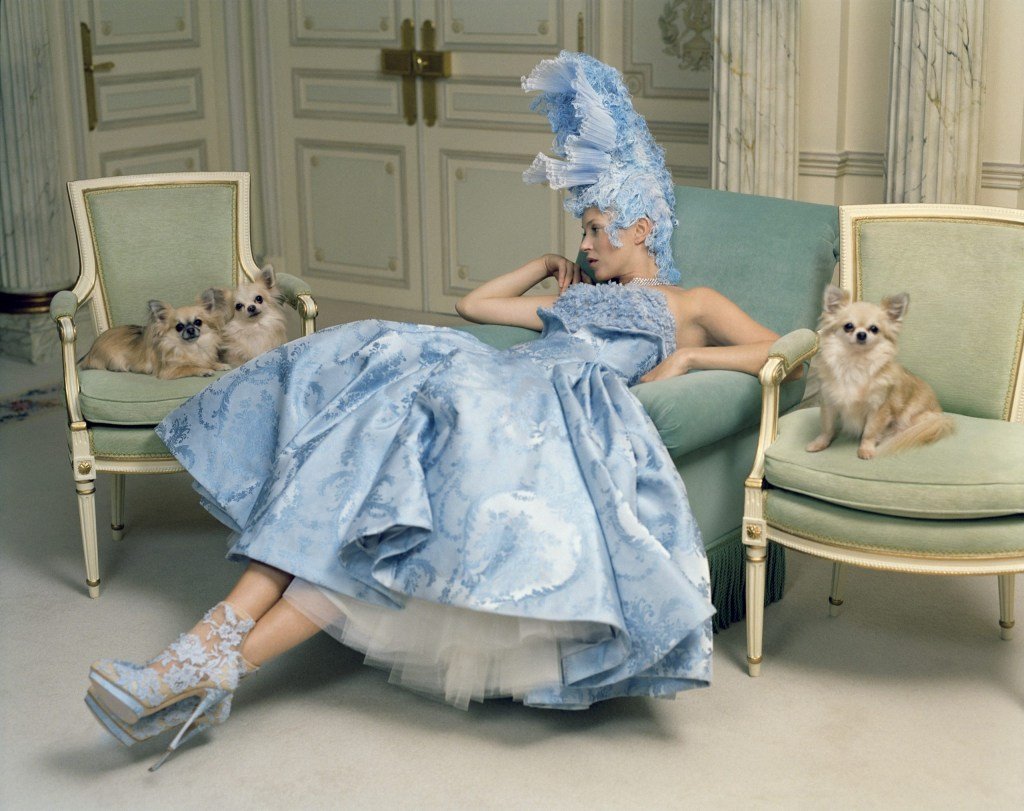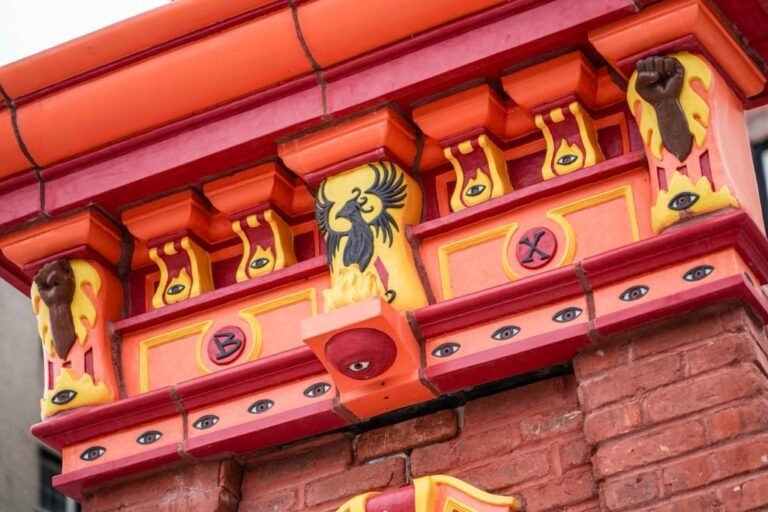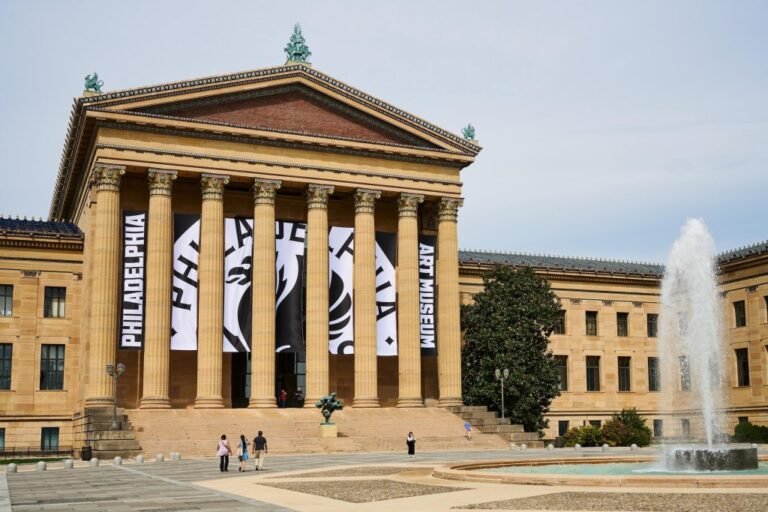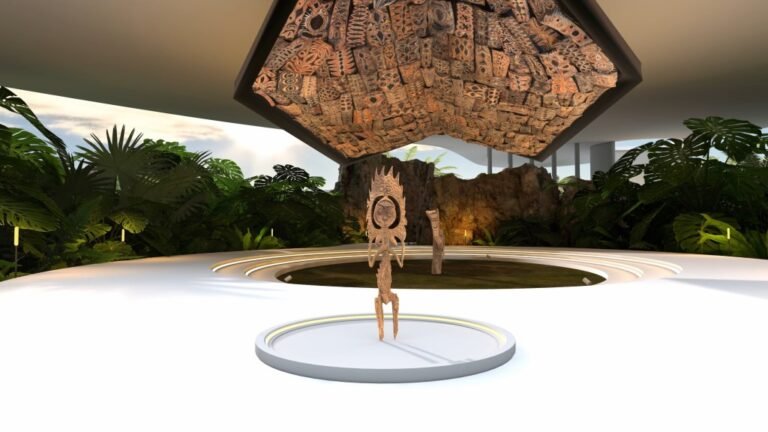

LONDON — The question of agency looms large in the Victoria and Albert Museum’s exhibition about the last queen of France. The text of Marie Antoinette Style introduces her as “the most fashionable, scrutinised and controversial queen in history,” and the portrait said to be most accurate in likeness has been animated in a wall projection so her visage smirks and twinkles out at us. Here are her most intimate clothes and belongings, an astonishing collection of perfectly preserved tiny slippers, corsets, and jewels; objects marked with her monogram in the caption indicate that they belonged to her personally. But the wall texts’ slippery wording constantly evades confirming her agency, despite extolling her “considerable influence as a patron of the arts” and describing her as a “style icon.”
Reading between the lines (and stitches), we glean an understanding of a political stage where the young queen’s sole purpose in life was to stand still at court and provide an heir to the king. “At 14, Antoinette made a dazzling entrance to the French court society at her wedding to the dauphin, the heir to the throne, wearing a shimmering gown of silver cloth,” we are told. Its silk “was ordered from Paris at enormous expense by her mother, Empress Maria Theresa of Austria.” We learn that she popularized styles and had favorite fabrics; that she received an astonishingly fine 1770 jewelry casket by Martin Carlin, on view via loan from Versailles, as a wedding gift. Regarding jewelry itself, the texts tell us that “during Antoinette’s reign innovative cuts enhanced the gems’ sparkle as never before.” In all of this, she is a passive agent. Surrounding pieces she owned are examples of wallpaper style and fabulous new levels of frippery in wigs and hairstyling. We are presented with increasingly hilarious hair designs, including one named “Triumph of Liberty” in the shape of a ship, recorded in a 1778 drawing and contextualized as “the most famous hairstyle associated with Antoinette.” The closest she gets to actual agency in this exhibition is when we learn that she landscaped the gardens of the Petit Trianon at Versailles and redesigned its interior.

Look only to the wince-inducing corsetry (the width of my neck, it seems) and the astounding creativity amongst dress makers, jewelers, and craftsmen at the time, which stuffs the first room. It’s clear that her social role left no room (literally) for anything other than fulfilling duties of dynastic heir-making and decorating her very public home to be as sumptuously pretty as possible. The fact that the first portrait we encounter — with its girlish face of no determinate age nor identifying feature — is considered her greatest likeness indicates that she was never really considered a person whose real visage was important to record. In short, we are no closer to understanding who she really was.
Compounding this lack of historical artifact about Antoinette’s true self is lead curator Sarah Grant’s reluctance to underpin the display with historical and sociopolitical background. It may be that there is simply no extant evidence from which to build an idea of her personality — perhaps she was never afforded one. Or it may be that when focusing on style, who needs to hear about nasty old revolutionary history anyway? The exhibition is sponsored by Manolo Blahnik and shows off a gorgeous and ingenious bit of stage design. The first half is all glittery low lighting, pink scalloped wall designs, and ambient music designed by an outfit (sorry) called Father that wouldn’t sound out of place in an ASMR video. The latter is pastel greens and articulated stages that showcase the vast historical expanse of fashion influenced by her “style” in the subsequent centuries via garments by designers from Galliano to Chanel to, of course, Manolo Blahnik with his famous Antoinette heel. A rather fun inclusion is mock busts filled with potpourri that one can lean in toward and whiff.

Demarking those two halves of the exhibition is a blood-red colored passage leading to an antechamber containing a contemporaneous example of a French guillotine (cool!) and photos of her severed head (macabre!). The curators had a whole birth canal of wall space with which to explain the historical and political machinations that would explain why she came to be executed (i.e. the background to that little thing called the Revolution). Do we get it? Nope.
The real triumph of this show is conservation. Even the inside of the extant shoes from the era have not a blemish nor tear. The presence of contemporaneous gowns in stupendously good condition are worth the admission price alone. Many are from the V&A’s collection, but the silver gown of Duchess Hedvig Elisabeth Charlotta similar to that worn by Antoinette at her wedding, loaned from the Royal Armoury in Stockholm, is extraordinary. No less remarkable are the dresses by Moschino designed to look like cake. Through this timeline of fashion designs from Antoinette’s age up to the present day, we can see how the queen’s style has reverberated in the form of light and airy motifs in pastel hues; decadence and decoration; excessively fluffy trains, hair, and poufs. Yet Antoinette remains known only by these cyphers. History has never really known her as a person, and that isn’t about to change here.


Marie Antoinette Style continues at the Victoria and Albert Museum South Kensington (Cromwell Road) through March 22, 2026. The exhibition was curated by Sarah Grant.


